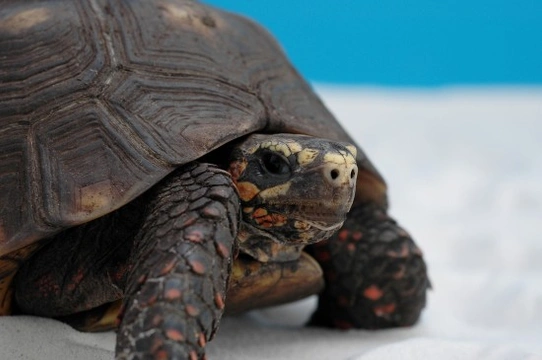
Reptile Brumation Explained
If you want to keep a reptile as a pet, whether it's a tortoise, an exotic lizard or snake, you'll need to brush up on how to keep them so they stay happy and healthy throughout the year. When the weather starts to cool down, many reptiles start to slow down and you'll notice a change in their behaviour as the night's draw in, they won't show that much interest in food either.
September is around the time when many species of reptile and this includes tortoises, lizards, frogs, turtles and snakes start to show signs of slowing down. A snake will slowly lose it's appetite and tortoise, turtles and lizards sit still for hours and start looking for place to burrow. All this behaviour is known as “brumation” and it's part of a reptiles' annual and much needed routine for it's survival. In short, brumation is exactly the same as hibernation is to mammals, the only difference is the terminology. Mammals go into hibernation and for reptiles, it's brumation.
It All Starts When the Temperature Drops
As soon as the temperature drops and the days begin to get shorter, reptiles start to look for a nice safe and warm place to hide. They need to be somewhere safe out the way of predators, it's when their metabolism slows right down to the bare minimum,and they remain this way until the spring arrives the following year and the weather warms up again.
The Ideal Temperature for Brumation
Ideally the ambient temperature for brumation is anything between 40 to 50 degrees Fahrenheit. This will initiate the process and you'll notice your pet gets lethargic and will remain so right through the colder season. When it comes to the length of time they brumate, this rather depends on their environment. In the wild, a reptile digs itself a burrow or finds a secure hiding place away from predatory eyes and will stay dormant until the weather warms up again.
However, in captivity, reptiles are kept under controlled conditions and as such owners need to provide them with what is known as a “hibernaculum” - somewhere their pets can hide and brumate. This is an important cycle in their annual lives because it helps them stay much healthier when kept in captivity.
However, when it comes to brumation there are other factors to consider as well which includes species types, age as well as gender. Reptiles that are kept in captivity closer to the equator will not brumate for the same amount of time as a reptile living in a country further away from the equator that boasts a varied seasonal climate like the UK.
As soon as the spring time arrives and the barometric pressure changes, you'll find your reptile wakes up, is alert and ready to come out of their hibernaculum because the ambient temperature is on the rise and so the annual cycle begins all over again.
The Reason Why Reptiles Brumate
Some species have to brumate to survive simply because their bodies are not capable of coping with climate changes, hence the colder weather would kill them if their bodies did not go dormant. They stop eating and their breathing slows right down as does their heart rate. Their digestion too, slows down to virtually nothing whilst they remain in this dormant state. Reptiles remain in a kind of “suspended animation” throughout this time, and many people believe it can actually lengthen their lives significantly.
The Difference Between Brumation in Wild & Captive Reptiles
In the wild reptiles get natural “cues” for when it's time for them to brumate – this includes certain hormonal changes they undergo. The shifts in air pressure and the levels of humidity as well as the shortening days, are all cues for them to go into brumation.
There's a lot of debate among reptile “gurus” as to whether captive reptiles still get these natural cues with many people seeing signs that their pets do even when kept in a controlled captive environment. The noticeable signs are a lack of interest in feeding and staying further away from their heat lamps, preferring to take refuge in a cooler area found in their habitat.
This is why many people believe it's necessary to create an area where a pet reptile can rest without being disturbed throughout the winter months, as if they were brumating. Owners need to keep their pet's hibernaculum at the right temperature, if it's too warm, the reptile will not go into a true brumation and if it's too cold, they might not wake up again in the spring when the weather starts to warm up.
Creating a hibernaculum has to be done very carefully so it suits the species of reptile you have, and if you are a first time owner, then you should seek advice from people who know all about this before setting one up so you get it right. A reputable reptile specialist will be able to tell you exactly what you would need to create so it suits the species of reptile you are hoping to keep as a pet.
Conclusion
If you're thinking about getting a reptile, you should think about offering a home to one from a rescue centre. Not only will the people running the centre be able to advise you on how to set up the right environment for the reptile, but how to create a hibernaculum for them too. There are lots of interesting and exotic reptiles waiting to be re-homed, from tortoises to monitor lizards and loads of other species in between. The great thing is you are offering these fascinating creatures a second chance to live out there lives being well cared for which is a lovely thought in anyone's books!



